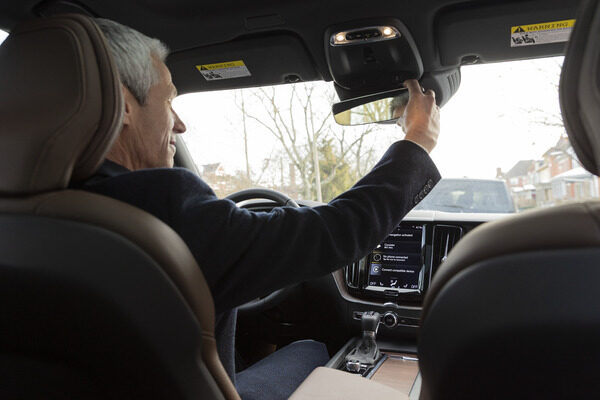
Manual or automatic? The debate has raged for many years, ever since automatic transmission technology became good enough to popularize these easy-driving vehicles. Once upon a time, almost every car on the road used a manual transmission, and learning to expertly release the clutch and shift gears was an immutable fact of growing up. Now, it’s mostly driving enthusiasts hanging on to that tradition. But is there anything more to the argument than the quality of the drive? In a word: yes. But to get to that, we need to establish what the transmission is in the first place.
What is a transmission?
A vehicle’s transmission is the component that feeds power generated by the engine to the wheels. It effectively determines what the proper amount of power to use is at any given time. At slower speeds your car requires less power, meaning the transmission will shift into a lower gear. As you accelerate, more power is required, necessitating a shift into a higher gear.1 In cars with automatic transmissions, this all happens without any input from the driver besides pressing the gas pedal. In a car with a manual transmission, the driver is the one who determines when a shift will be necessary, executing it manually with the clutch pedal and stick shift. But in the battle of manual vs automatic transmission, which is right for you? Learn the manual vs automatic pros and cons of each transmission type so you can make an informed decision.
How does a manual transmission work?
As the name suggests, a manual transmission requires the driver to manually shift their car into the proper gear. In order to make this happen, manual cars have to include a couple of features that cars with automatic transmissions can forgo. The first of these is the clutch pedal, located just to the left of the brake pedal. The driver presses down on this pedal to temporarily cut engine power to the transmission. With this done, the driver can then shift their car into a different gear using the stick shift, which sits in the center console.2
Advantages of manual transmission
- Because a manual transmission doesn’t have as many complex parts as automatic, manual cars are less expensive to service and often don’t need to be serviced as frequently.
- Drivers have more control in manual cars, with better braking thanks to the lack of torque converter automatic transmissions have.
- Manual cars themselves are also less expensive to purchase than their automatic counterparts
- In the debate over manual vs automatic, one of the biggest selling points for manual transmission cars is that they are typically more fuel-efficient.3
- A manual car has better acceleration than an automatic since the driver can choose to upshift faster than an automatic transmission would. There’s a reason race car drivers drive manuals.4
Disadvantages of manual transmission
- Manual may have the financial edge in the manual vs automatic transmission debate, but it does have some functional drawbacks. When stopping on hills, for example, manual drivers must let off the gas to press down the clutch and shift back into first gear. In that brief moment, the car will roll backward, making for a more stressful and potentially hazardous start.
- Another functional struggle of driving a manual car is learning to do it properly in the first place. First-time manual drivers will experience jerky shifts and repeated stall-outs.5
- Because the driver must be more engaged in operating the car, manual transmissions are that much more unforgiving in instances of distracted driving.
- Resale value for cars with manual transmissions tends to be lower than their automatic counterparts.
- Manual cars are not as widely available due to their lack of popularity in the US.6
How does an automatic transmission work?
An automatic transmission does everything a manual does, but without any effort on the driver’s part. Inside every automatic transmission is a part called the planetary gear set. This part creates different gear ratios that ensure the engine and wheels are not spinning at the same speed.7 You’ll notice when riding in a car with an automatic transmission that the engine RPM’s rise steadily with acceleration, then dip back down before continuing to rise again. That’s the planetary gear set at work, upshifting to put less of a burden on the engine as the wheels spin faster. It accomplishes this by using transmission fluid, which creates the pressure needed to enact gear shifts and also cools and lubricates moving parts.8
Advantages of automatic transmission
- Cars with automatic transmissions are more user-friendly since they shift gears automatically.
- Automatic cars have a higher average resale price than their manual counterparts.
- Because they don’t require the driver to engage the clutch every time they stop, automatic cars are much easier to drive in stop-and-go traffic.
- Because of their popularity, automatic cars are widely available in the US.9
- While skilled manual drivers can shift gears seamlessly, most automatic cars offer a smoother ride, since the gear shift is less noticeable.10
Disadvantages of automatic transmission
- Just as the resale price of an automatic car is higher, the sale price is higher too. Cars with automatic transmissions will typically cost more than cars with manual transmissions.
- Automatic transmissions have more complex and expensive parts than manual transmissions, and so they generally have higher maintenance costs.
- Cars with automatic transmissions tend to have worse fuel efficiency than manuals, although this is beginning to change as automatic transmission technology continues to improve.11
- Drivers have less control in general when behind the wheel of a car with automatic transmission.
- Automatic transmissions require more servicing on average, owing to the fact that they have more moving parts providing more opportunities for things to go wrong.12
Shift into the car-buying mindset
Shopping for a new or used car can be exciting, but there are lots of big decisions to make and among them is whether a manual or automatic transmission is better. If you are considering a switch to manual from automatic, or vice versa, make sure that you do some test drives to give yourself a feel for the difference. Ultimately, it comes down to your preferences and what you’ll be using the vehicle for. If you are considering buying a car soon, use these tips for buying a car from a private seller or a dealership.
1https://www.drivparts.com/parts-matter/learning-center/driver-education-and-vehicle-safety/manual-vs-automatic-car.html, Accessed August 2021.
2https://www.drivparts.com/parts-matter/learning-center/driver-education-and-vehicle-safety/manual-vs-automatic-car.html, Accessed August 2021.
3https://www.aeroautoparts.com/blog/advantages-and-disadvantages-of-a-manual-transmission/, Accessed August 2021.
4https://www.drivparts.com/parts-matter/learning-center/driver-education-and-vehicle-safety/manual-vs-automatic-car.html, Accessed August 2021.
5https://www.aeroautoparts.com/blog/advantages-and-disadvantages-of-a-manual-transmission/, Accessed August 2021.
6https://www.drivparts.com/parts-matter/learning-center/driver-education-and-vehicle-safety/manual-vs-automatic-car.html, Accessed August 2021.
7https://www.drivparts.com/parts-matter/learning-center/driver-education-and-vehicle-safety/manual-vs-automatic-car.html, Accessed August 2021.
8https://www.drivparts.com/parts-matter/learning-center/driver-education-and-vehicle-safety/manual-vs-automatic-car.html, Accessed August 2021.
9https://www.drivparts.com/parts-matter/learning-center/driver-education-and-vehicle-safety/manual-vs-automatic-car.html, Accessed August 2021.
10https://www.edmunds.com/fuel-economy/five-myths-about-stick-shifts.html, Accessed August 2021.
11https://www.drivparts.com/parts-matter/learning-center/driver-education-and-vehicle-safety/manual-vs-automatic-car.html, Accessed August 2021.
12https://stevesimports.com/blog/the-pros-and-cons-of-automatic-transmissions/, Accessed August 2021.
Disclaimer:
The information included is designed for informational purposes only. It is not legal, tax, financial or any other sort of advice, nor is it a substitute for such advice. The information may not apply to your specific situation. We have tried to make sure the information is accurate, but it could be outdated or even inaccurate in parts. It is the reader’s responsibility to comply with any applicable local, state, or federal regulations. Nationwide Mutual Insurance Company, its affiliates and their employees make no warranties about the information nor guarantee of results, and they assume no liability in connection with the information provided. Nationwide, Nationwide is on your side, and the Nationwide N and Eagle are services marks of Nationwide Mutual Insurance Company. © 2021 Nationwide.



